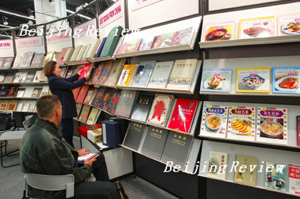|

Structural reform has undoubtedly injected vigor into the development of Liaoning Publishing Group, which has achieved remarkable progress in diversification of asset mix, management reform, personnel structural adjustment, establishment of hi-tech supporting systems and a modern book logistics center.
According to latest statistics from the Liaoning Publishing Group, its book reprints have increased by 10.2 percent compared with the figure before the founding of the publishing group, and the number of books winning national prizes and ministerial/provincial prizes has increased by 55 percent and 36 percent respectively. At the Beijing Book Fair of 2003, Liaoning Publishing Group won the largest order. All major indicators increased by over 10 percent compared with those before the group was established, among which total assets increased by 61.1 percent, net assets by 91 percent, sales by 30 percent, sales income by 39.5 percent, and profits by 32.8 percent.
By the end of last year, 13 large publishing groups had been established in China, marking the initial completion of restructuring of the Chinese publishing industry.
Zhang Shengyou, head of the Management Committee of the Chinese Writers’ Publishing Group, believed that the goal of establishing publishing groups is not only to put several companies under one roof. More important, according to him, is to enhance the overall efficiency of the publishing industry, achieve more impact through rearranging resources and create a brand name.
Rigorous Revamp
Last year was seen by business insiders as the first year of reform for the Chinese publishing industry. In early 2004, the General Administration of Press and Publication announced that about 570 state-owned publishing houses were to be restructured and transformed into companies in the next three to seven years. This excludes the People’s Publishing House in Beijing and all the provincial people’s publishing houses.
In China, due to historical reasons, publishing houses have long existed as public institutions rather than companies. For example, Guangdong Education Publishing House was a public institution directly under the Guangdong Provincial Bureau of Press and Publication, which led to the double identity of the bureau both as regulator and player of the publishing industry. Under the wing of the bureau, Guangdong Education Publishing House could easily survive without participating in market competition.
Deepened structural reform has required a function shift of government from an operator to a regulator of cultural industry, through drawing a clear line between government functions and enterprise management and lawfully implementing its administrative function.
| .jpg)
.jpg)